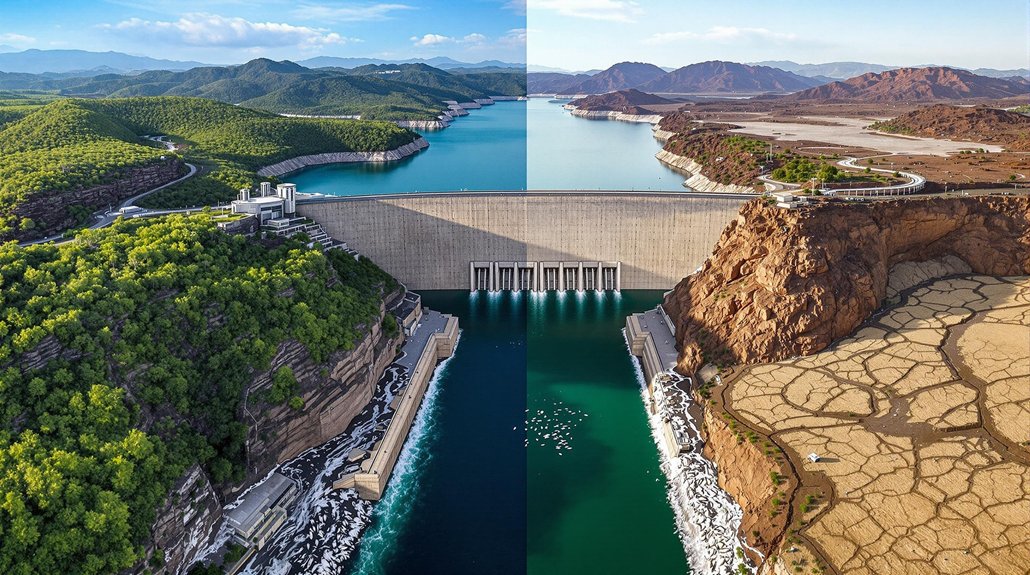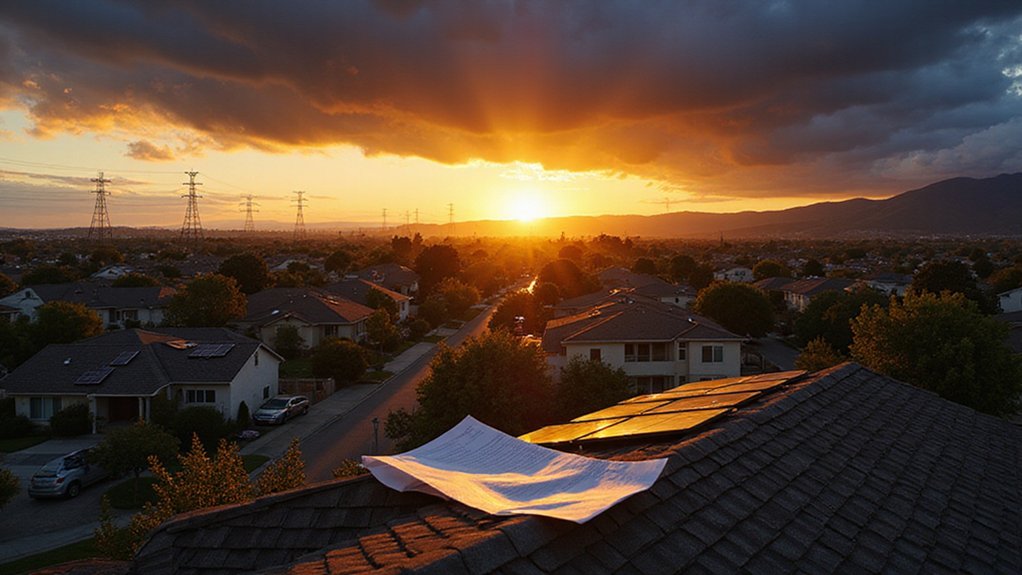Governor Newsom used SB 7 powers to bulldoze through red tape for a massive renewable project in Riverside County. The 300 MW solar plus 150 MW battery installation now powers 135,000 homes while cutting 461 million pounds of greenhouse gases yearly. Started December 2024, it created 450 construction jobs and ongoing tax revenue. California’s clean energy goals suddenly look less laughable. This fast-tracking approach could change everything for future developments.
A massive 300 MW solar plus 150 MW battery storage project is now powering California homes. Located in Riverside County, the complex started operations in December 2024 and serves roughly 135,000 households. It’s one of the biggest solar+storage installations in the state. No small feat.
Governor Newsom wasn’t messing around with this one. He certified the project under SB 7, effectively telling legal challengers to take a hike. The move aligns with his aggressive push to speed up clean energy development across California. The goal? Ninety percent clean energy by 2035. Ambitious? Yes. Necessary? Probably.
Governor Newsom fast-tracked this project, bypassing legal hurdles to accelerate California’s bold clean energy transition.
The environmental impact is nothing to sneeze at. The project eliminates 461 million pounds of greenhouse gases annually. That’s like yanking 49,000 gas-guzzlers off the road or planting 3.4 million trees for a decade. Not bad for some panels and batteries in the desert. This impressive figure aligns with BLM’s broader commitment to promoting clean energy projects across public lands.
Jobs matter too. The construction phase created 450 positions and continues generating tax revenue for the area. The project represents a fraction of the 13.7 million jobs globally supported by renewable energy as of 2022. The Cornucopia Hybrid Energy Project will provide 300 megawatts of solar power once completed. Southern California’s energy resilience just got a serious upgrade.
Technically speaking, the system delivers power when demand peaks. That’s the beauty of adding 600 MWh of battery storage to the mix. Solar energy gets captured during the day and used when actually needed. Revolutionary stuff, right?
EDF Renewables and PSEI developed the project, securing a 20-year power purchase agreement with Clean Power Alliance. It’s part of EDF’s broader 3,000 MW California portfolio. These developers aren’t playing around.
The implications stretch beyond just one project. Newsom’s fast-tracking sets a precedent for future clean energy developments. California continues positioning itself as America’s renewable energy leader, streamlining processes that typically move at glacial speeds.
Will other states follow suit? Maybe. One thing’s certain: California’s 2045 clean electricity target looks slightly more achievable with projects like this coming online. Red tape, apparently, can be cut.








